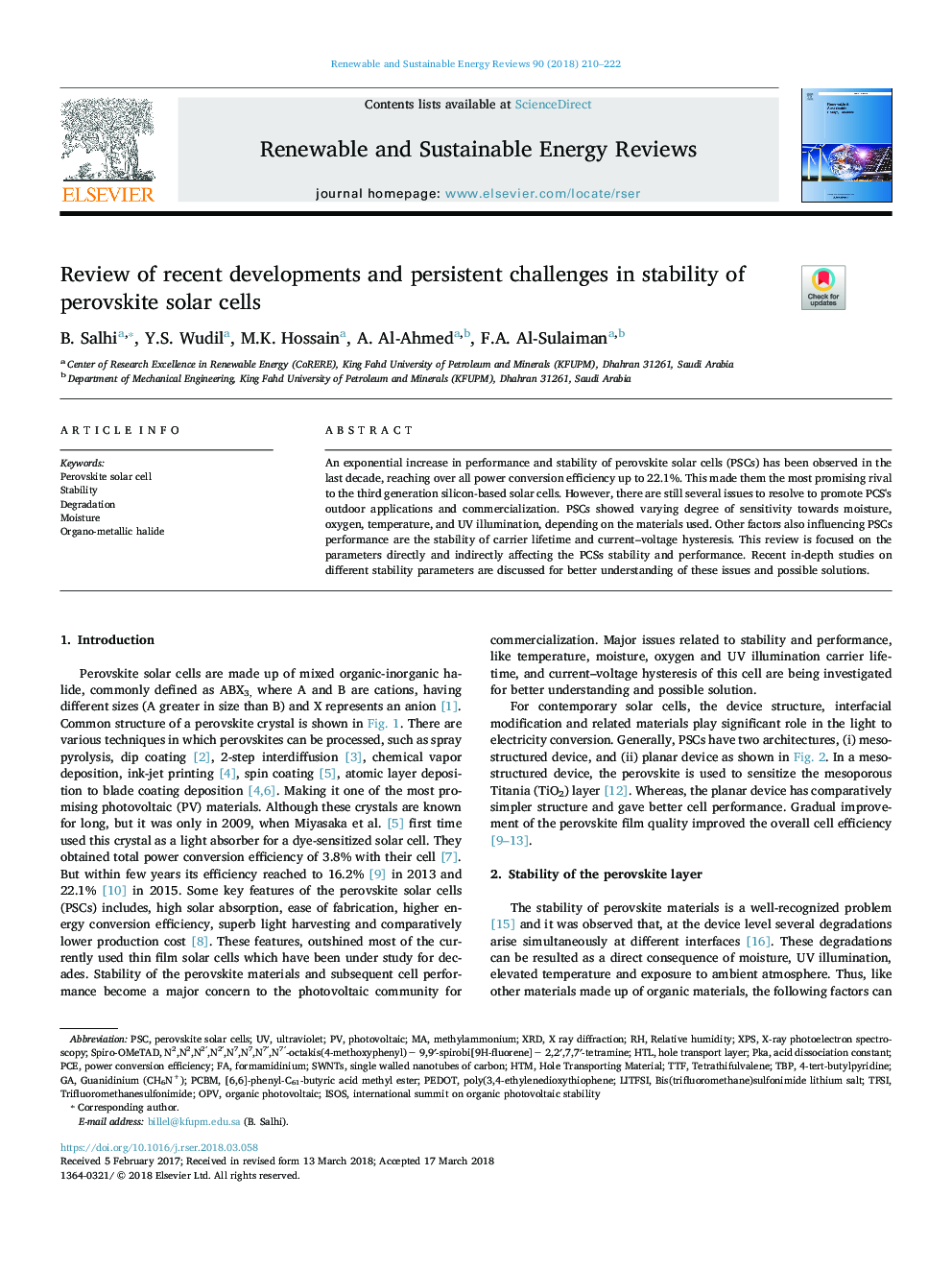| Article ID | Journal | Published Year | Pages | File Type |
|---|---|---|---|---|
| 8111220 | Renewable and Sustainable Energy Reviews | 2018 | 13 Pages |
Abstract
An exponential increase in performance and stability of perovskite solar cells (PSCs) has been observed in the last decade, reaching over all power conversion efficiency up to 22.1%. This made them the most promising rival to the third generation silicon-based solar cells. However, there are still several issues to resolve to promote PCS's outdoor applications and commercialization. PSCs showed varying degree of sensitivity towards moisture, oxygen, temperature, and UV illumination, depending on the materials used. Other factors also influencing PSCs performance are the stability of carrier lifetime and current-voltage hysteresis. This review is focused on the parameters directly and indirectly affecting the PCSs stability and performance. Recent in-depth studies on different stability parameters are discussed for better understanding of these issues and possible solutions.
Keywords
ISOS[6,6]-Phenyl-C61-butyric acid methyl esterPCBMSWNTsTFSIHTMpKaTTFPSCSpiro-OMeTADPCEHTLOPVTBPmethylammoniumLiTFSIPEDOT4-tert-ButylpyridineUltravioletDegradationacid dissociation constantStabilityPower conversion efficiencyRelative humidityPerovskite solar cellPerovskite solar cellsX-ray photoelectron spectroscopyXPSPhotovoltaicOrganic photovoltaicFormamidiniumHole transport layerMoistureHole transporting materialX ray diffractionXRD
Related Topics
Physical Sciences and Engineering
Energy
Renewable Energy, Sustainability and the Environment
Authors
B. Salhi, Y.S. Wudil, M.K. Hossain, A. Al-Ahmed, F.A. Al-Sulaiman,
